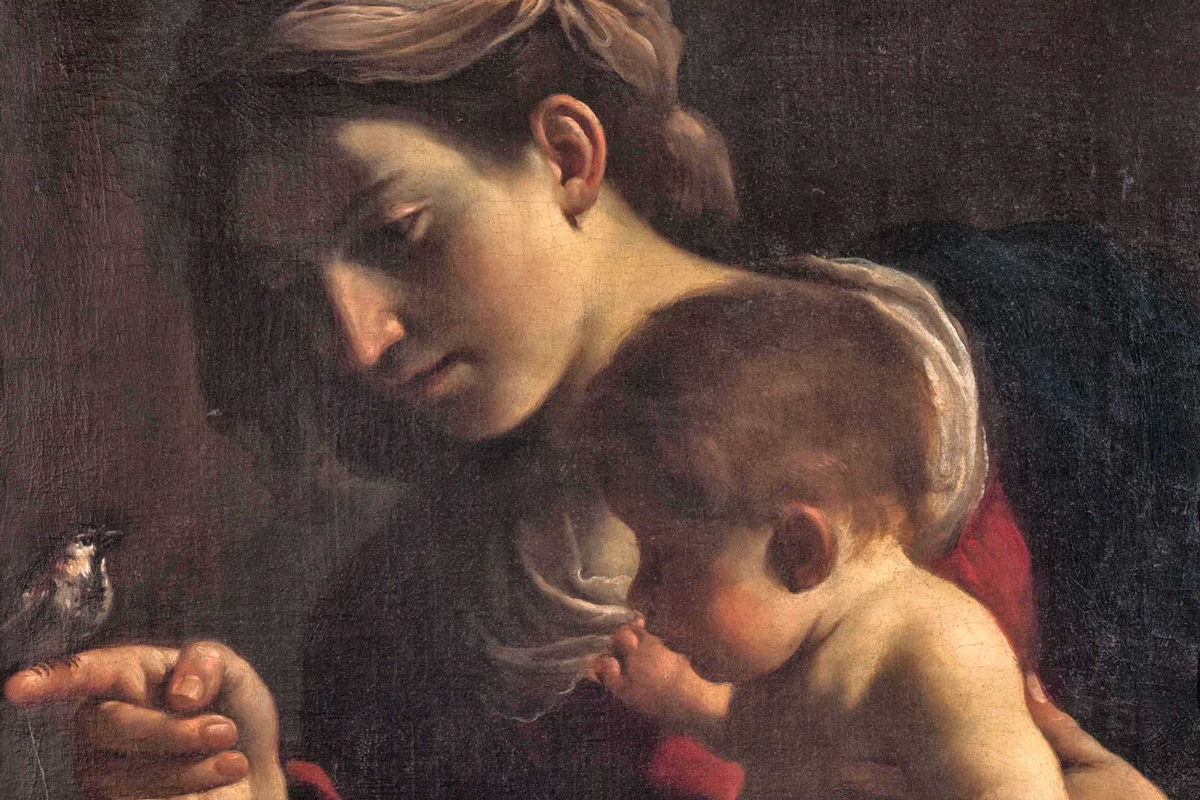"As soon as he moved to Bologna, Guercino found a fertile environment that welcomed and promoted his talent, consecrating him among the great masters of painting."
Carlo Cesare Malvasia, "Felsina pittrice" (1678) .
Perhaps even more than Cento, his hometown, it was Bologna that consecrated Guercino's career, making him one of the greatest interpreters of European Baroque painting. The city shaped his talent, becoming the main stage for his artistic maturity with some of his most famous works.
Here he spent much of his life until his death in 1666, together with his family, establishing an atelier capable of meeting the demands of popes, cardinals, kings and queens.
Even today, this connection shines through, confirming the historical and cultural importance of Bologna, which proudly holds many of the artist's works, including several masterpieces on display in the Pinacoteca Nazionale and in various churches in the historic center.

Guercino first came to Bologna in 1609, sent by his first master, Benedetto Gennari senior, to perfect his painting technique. He found hospitality with Paolo Zagnoni and immediately entered the workshop of Giovan Battista Cremonini, known for his skill and speed in fresco painting.
The city, with its rich artistic traditions, offered the painter from Cento the opportunity to study the works of the great masters, particularly those of the Carracci brothers, for whom he felt immeasurable esteem.
A few years later, Ludovico Carracci himself introduced the painter to Cardinal Alessandro Ludovisi, archbishop of Bologna, who, having become Pope Gregory XV, invited the artist to Rome, consecrating him as a great master of Italian Baroque.

After several artistic interludes between Rome and Venice, in 1642 Guercino decided to leave Cento and move to Bologna, where he lived until his death on December 22, 1666. His tomb still stands today in the Church of the Santissimo Salvatore, next to that of his brother Paolo Antonio Barbieri.
From that time Bologna became the center of his life and work. He bought a house on Via Sant'Alo, which he converted into a studio, and his relatives, many young artists and trusted collaborators worked there.
The studio's productivity becomes copious. Many desire a work by the now world-famous Guercino. Nobles, princes and cardinals from Piacenza to Venice, from Ferrara to Rome, seek him out to commission portraits, frescoes and altarpieces. To all he proposed a detailed price list, recording payments in the "Book of Accounts, " now kept at the Archiginnasio Library in Bologna.

One of the places in the city in which to admire Guercino's talent up close is definitely the Pinacoteca Nazionale. This museum, located in the heart of the city, holds some of his most important works, offering visitors an immersive experience.
Prominent among the masterpieces on display are "Madonna of the Sparrow" (1615-1616), "Saint Sebastian Cured by Irene" (1619), "The Dressing of Saint William" (1620), and "Saint Bruno in Adoration of the Madonna and Child in Glory" (1647).
The Pinacoteca not only preserves these works, but also organizes exhibitions and thematic itineraries dedicated to Guercino, allowing visitors to learn more about his life and art as it relates to the Bolognese Baroque context.
In addition to the Pinacoteca, numerous churches and palaces in Bologna hold works by Guercino, testifying to his influence and deep connection with the city.
From the Church of San Giovanni in Monte to the Basilica of San Paolo Maggiore to Palazzo Sampieri Talon, there are many places marked by the hand of the master and his atelier.
For lovers of art and history, following Guercino's footsteps in Bologna is an experience not to be missed, capable of enriching the spirit and the mind.
DISCOVERING GUERCINO
DOWNLOAD THE MAP!An itinerary through Guercino's Baroque art, among art cities, churches and palaces, museums and private collections
- Pinacoteca Nazionale di Bologna: www.pinacotecabologna.beniculturali.it
- The ways of Guercino (Bologna): www.bolognawelcome.com/it/informazioni/guercino